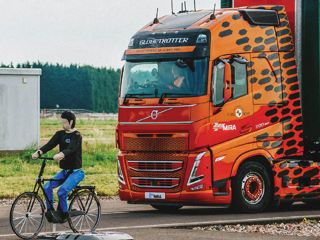Robust data collection and analysis continues to be key for fleets to improve operations, costs and safety.
At a roundtable discussion at the recent Fleet200 Strategy Network meeting in Barnsley, attendees discussed:
The cheapest place to charge a car is at a workplace, which likely has corporate rates for electricity.
Then it is at home, but this has its own issues in managing reimbursement, especially when you have drivers who cannot charge at home and charging on the public network is 70-odd pence per kWh.
“To pull that all together and strike a balance is proving really challenging for us,” said one fleet decision-maker. “You’ve also got to stay HMRC compliant and VAT compliant. There’s just so many permutations that we’re really struggling.
“At the moment we’re trying to get guys to fill in their own Excel spreadsheets and produce evidence which is taking photographs of your charging point when you charge up because you don’t get receipts anymore.
“If you sign up for an app, great, you can see it really easily, but if you pay contactless at a charge point, it tells you you’ve spent £29. Great. But how many kilowatts do they get? How do you equate that to anything? People are really starting to struggle.”
Robust data collection and analysis continues to be key for fleets to improve operations, costs and safety.
At a roundtable discussion at the recent Fleet200 Strategy Network meeting in Barnsley, attendees discussed:
- The use of telematics was aimed at improving driver behaviour primarily, and then improved driving also sees better fuel economy, which saves money.
- Telematics systems have evolved and enabled better route planning systems to make productivity improvements.
- The roundtable heard the switch to electric vehicles has increased the complexity of fleet management, with fuel reimbursement being a massive challenge.
The cheapest place to charge a car is at a workplace, which likely has corporate rates for electricity.
Then it is at home, but this has its own issues in managing reimbursement, especially when you have drivers who cannot charge at home and charging on the public network is 70-odd pence per kWh.
“To pull that all together and strike a balance is proving really challenging for us,” said one fleet decision-maker. “You’ve also got to stay HMRC compliant and VAT compliant. There’s just so many permutations that we’re really struggling.
“At the moment we’re trying to get guys to fill in their own Excel spreadsheets and produce evidence which is taking photographs of your charging point when you charge up because you don’t get receipts anymore.
“If you sign up for an app, great, you can see it really easily, but if you pay contactless at a charge point, it tells you you’ve spent £29. Great. But how many kilowatts do they get? How do you equate that to anything? People are really starting to struggle.”
Login to continue reading.
This article is premium content. To view, please register for free or sign in to read it.

























Login to comment
Comments
No comments have been made yet.